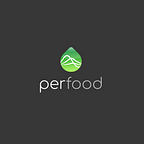What wearing a CGM did to me
“I am not a coward. I can do this.”
Dominik Burziwoda — CEO @ Perfood
This was literally what I was thinking when I was sitting in front of a continuous glucose monitory (CGM) device the first time. I had tried an at-home blood test before after which my desk looked like I had slaughtered a pig. It was blood everywhere. I didn’t even know that so much blood could come out my finger. This was 2017 and I didn’t have diabetes. I even had never measured my fasting glucose with a finger prick device. The CGM had a sensor and application aid.
I setup the device and could only see a needle looking at me from the application aid. Even though I do stuff that people might deem risky, such as backcountry snowboarding, mountain- and road biking across the alps, I consider myself a contemplative person that takes calculated risks. Using the CGM device wasn’t a calculated risk but would certainly hurt. In the spirit of science, I finally got myself to place the application aid on my arm and push the sensor on it. Nothing. No blood, no pain. I was stunned. I felt nothing and saw the white sensor sitting on my arm. The device came with a glucose reader that I connected with the sensor to start it. “60 minutes left for the first measure” it said.
I was a bit annoyed that I now had to wait for 60 minutes before I could see something. After this first disappointment, I started thinking how I could provoke my first glycemic response. I chose “Apfelschorle” a typically German beverage that is made of apple juice mixed with water. Back in the 1990s during my childhood, this was widely considered a “healthy drink” as it contains “minerals” from the mineral water and “vitamins” from the apple juice. I ran down to the grocery store to grab some and emptied the 330ml bottle rather quickly.
About 20 minutes later I saw my glucose levels go up. About one hour later, my glucose spiked to more than 165dl and then falling steeply to less than 100mg/dl about 30 minutes thereafter. I can’t even describe what I felt in this moment. I was excited, amazed and with a whole lot of questions at the same time. The first time in my life I was able to literally see what a beverage did in my body. I could observe the biochemical process that was responsible to provide energy to my cells, my muscles, and my brain. I was paying attention to how I felt, my mood, my heart rate, my focus. I felt like I gained a whole new level of “nutrition” in just a single moment.
Following this moment, I got excited. Two weeks of testing meals were ahead of me. I immediately compiled a list with all the different foods I wanted to learn about. Among them foods considered healthy, such as Musli (oatmeal), fruits, vegetables, and unhealthy, such as chocolate, crisps, pizza, fries and burgers, and foods where I didn’t really know to think of such as pasta, sushi and ramen. I made a good plan when to test what so that I could get the most out of my two-week testing period.
After these two weeks, my cofounders, medical doctors and diabetologists, sat together and gave me the first personalized nutrition analysis we ever rendered at Perfood. The results were astonishing. The apparently “healthy” Apfelschorle was just as bad as a regular coke. Musli (oatmeal) gave me an awful glycemic response which is why since then, it completely vanished from my grocery shopping list. White bread with Nutella (chocolate cream) turned out to be a decent breakfast. The list was packed with surprises and full of busted myths. For me, it was the start to approach nutrition and health in a completely new way…
